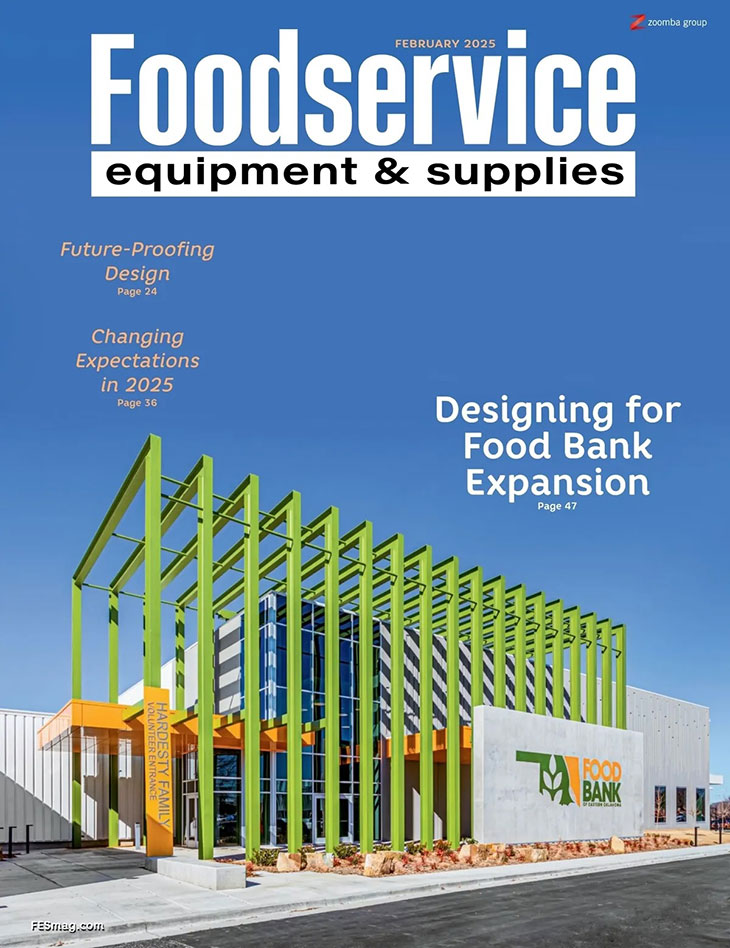Food delivery carts help keep food fresh and at food-safe temperatures during transport. Foodservice operators can choose between different size carts and configurations with different capacities.
Meal delivery carts help keep food items hot and fresh during transport. Meals can be delivered either in bulk or on trays from this equipment, depending on the operation.
High- and low-profile carts have capacities ranging from 6 up to 36 trays. Room service carts typically hold 8, 12 or 16 trays, while low-profile units or shorts have 20- to 24-tray capacities, depending on the model and manufacturer. Taller carts accommodate 26 to 30 trays at one time.
Room service carts are typically open with insulated covered tray systems for quick distribution, while retherm or insulated retherm carts are often used in conjunction with cook-chill operations. Hot/cold carts have both refrigeration and heating capabilities on board for food and meal storage and temperature maintenance. Although these models are used for meal delivery, most are not designed to cook or chill food.
There are two types of electric meal delivery carts. The aforementioned one-piece self-contained carts provide heating and/or cooling within the unit. There also are two-piece systems with a fixed base and mobile cart. With this design, trays are placed in the electrically heated base station for retherming, then positioned in a nonelectric cart for delivery. This version is used most often for longer transport distances or longer holding.
Insulated carts that use CFC-free foam maintain temperatures for 30 to 60 minutes without electricity. These are designated for food delivery, rather than extensive holding.
The carts offer different configurations for a variety of uses. Models with one, two or three doors are available. Some operators prefer to have doors on both sides of the cart for simultaneous loading and unloading. This design is not recommended for use in narrow hallways that may be obstructed. Also, carts with two or more doors lose rigidity and service life may be compromised.
There are different cart grades. The majority are made of stainless steel, while some lower-end models combine aluminum and plastic. This impacts the meal delivery cart’s weight and durability.
For hospital room service programs, patients call a number to order their meals, which get delivered to their hospital beds in about 45 minutes. The majority of these programs utilize carts with 10-tray capacities to ensure the quick serving of food and that meals stay at optimum temperatures, which is greater than 140 degrees F for hot food and less than 40 degrees F for cold food.
Standard meal delivery cart features vary significantly by model and manufacturer. These typically include casters, doors with magnetic latches, vents to promote even airflow for hot and cold food, drains for easier cleaning and ergonomic handles.
Options also vary, depending on the cart type and manufacturer. Operators can specify one-, two- or three-sided top rails for extra storage on top of the unit, which serve as extra handles for pushing. Corner or wraparound bumpers help protect the cart as well as walls during transport. Casters are typically 5 to 6 inches, but larger 8-inch wheels are available in different configurations for easier maneuverability. Central caster brakes, rather than individual brakes for each wheel, also are offered. Upgraded HACCP management or temperature-monitoring systems are available with some carts. Operators can choose to add lockable door latches; electrical options; and colored, decorative or logo panels.
The latest meal delivery cart innovations include the use of lighter materials, like carbon fiber, to reduce the cart weight and make it more ergonomic. Also, newer refrigerants for cold carts provide added energy efficiency.












